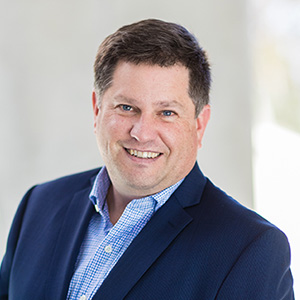Source: Interfolio F180

Philip Dawson, PhD
Research Focus
Development & Utilization of Methods to Incorporate Unnatural Chemical Groups into Proteins.
We have developed a chemical approach for the production of the large polypeptide chains that comprise protein molecules, enabling us to change the structure of a protein in ways impossible by natural means. We use solid phase peptide synthesis to generate peptides up to ~50 amino acids in length and then assemble them using chemoselective reactions to make proteins up to ~150 amino acids in length. This-chemical ligation-approach greatly facilitates the synthesis of proteins of moderate size and has opened the world of proteins to the synthetic tools of organic chemistry. Chemical ligation can be extended to biologically expressed proteins enabling the semisynthesis of proteins of unlimited size that contain fluorophores or cross-linking agents at defined positions. Our goal is to introduce non-coded amino acids and other chemical groups into proteins to better understand the molecular basis of protein function.
Education
A.B., Washington University in St. Louis, 1992Ph.D. (Macromolecular and Cellular Structure and Chemistry), The Scripps Research Institute, 1996
Professional Experience
2016-present, Professor, Department of Chemistry, Scripps Research
2017-2024, Dean of Graduate and Postdoctoral Studies, Skaggs Graduate School of Chemical and Biological Science, Scripps Research
2012-2017, Associate Dean of Graduate and Postdoctoral Studies, Scripps Research
2010-2016, Associate Professor, Department of Chemistry, Scripps Research
2005-2010, Associate Professor, Department of Cell Biology, Scripps Research
1997-2005, Assistant Professor, Department of Cell Biology, The Skaggs Institute for Chemical Biology, Scripps Research
1996-1997, Postdoctoral Scholar with Drs. Harry B. Gray and Thomas J. Meade, Department of Chemistry, California Institute of Technology
Awards & Professional Activities
•Alfred P. Sloan Fellow, 1999-2001•Vincent du Vigneaud Award, 2010
•Gold Medal of the Max Bergmann Kreis, 2011
•Chairman, American Peptide Symposium, 2011
•Co-Chairman, Gordon Research Conference, 2016
•Elected President, American Peptide Society, 2013-2018
•Leonidas Zervas Award, 2014
•Akabori Memorial Award, Japanese Peptide Society, 2020
•100 Invited lectures
•6 Scientific Advisory Boards
•4 Journal Editorial Boards
•>190 Peer Reviewed Publications
•21,899 citations
•>35 graduate and postdoctoral students
Selected Publications
Otomo, Takanori; Dawson, Philip E.; Otomo, Takanori; Lu, Chenxi; Knouse, Kyle W.; Hintzen, Jordi C.; Hill, David E.; Flood, Dillon T.; Dawson, Philip E.; Cistrone, Philip A.; Chen, Jason S. Selenomethionine as an expressible handle for bioconjugations.. Proceedings of the National Academy of Sciences of the United States of America 2021, 118, e2005164118.
[View]
Deechongkit, Songpon; Nguyen, H.; Powers, Evan T.; Dawson, Philip E.; Gruebele, M.; Kelly, Jeffery W. Context-dependent contributions of backbone hydrogen bonding to ß-sheet folding energetics. Nature 2004, 430, 101-105.
[View]
Wolan, Dennis W.; Dawson, Philip E.; Baran, Phil S.; Wolan, Dennis W.; Vantourout, Julien C.; Sturgell, Emily J.; Sanchez, Brittany B.; Knouse, Kyle W.; Kitamura, Seiya; Flood, Dillon T.; Dawson, Philip E.; Chen, Jason S.; Baran, Phil S. Synthetic Elaboration of Native DNA by RASS (SENDR).. ACS central science 2020, 6, 1789-1799.
[View]
Flood, Dillon; Hintzen, J. C.; Bird, Michael J.; Cistrone, Philip A.; Chen, Jason S.; Dawson, Philip E. Leveraging the Knorr pyrazole synthesis for the facile generation of thioester surrogates for use in native chemical ligation. Angewandte Chemie-International Edition 2018, 57, 11634-11639.
[View]
Flood, Dillon; Yan, Nicholas; Dawson, Philip E. Post-translational backbone engineering through selenomethionine-mediated incorporation of Freidinger lactams. Angewandte Chemie-International Edition 2018, 57, 8697-8701.
[View]
Silvestri, Anthony P.; Cistrone, Philip A.; Dawson, Philip E. Adapting the glaser reaction for bioconjugation: robust access to structurally simple, rigid linkers. Angewandte Chemie-International Edition 2017, 56, 10438-10442.
[View]
Reichart, Timothy M.; Baksh, M. M.; Rhee, J. K.; Fiedler, Jason D.; Sligar, S. G.; Finn, M. G.; Zwick, Michael B.; Dawson, Philip E. Trimerization of the HIV transmembrane domain in lipid bilayers modulates broadly neutralizing antibody binding. Angewandte Chemie-International Edition 2016, 55, 2688-2692.
[View]

